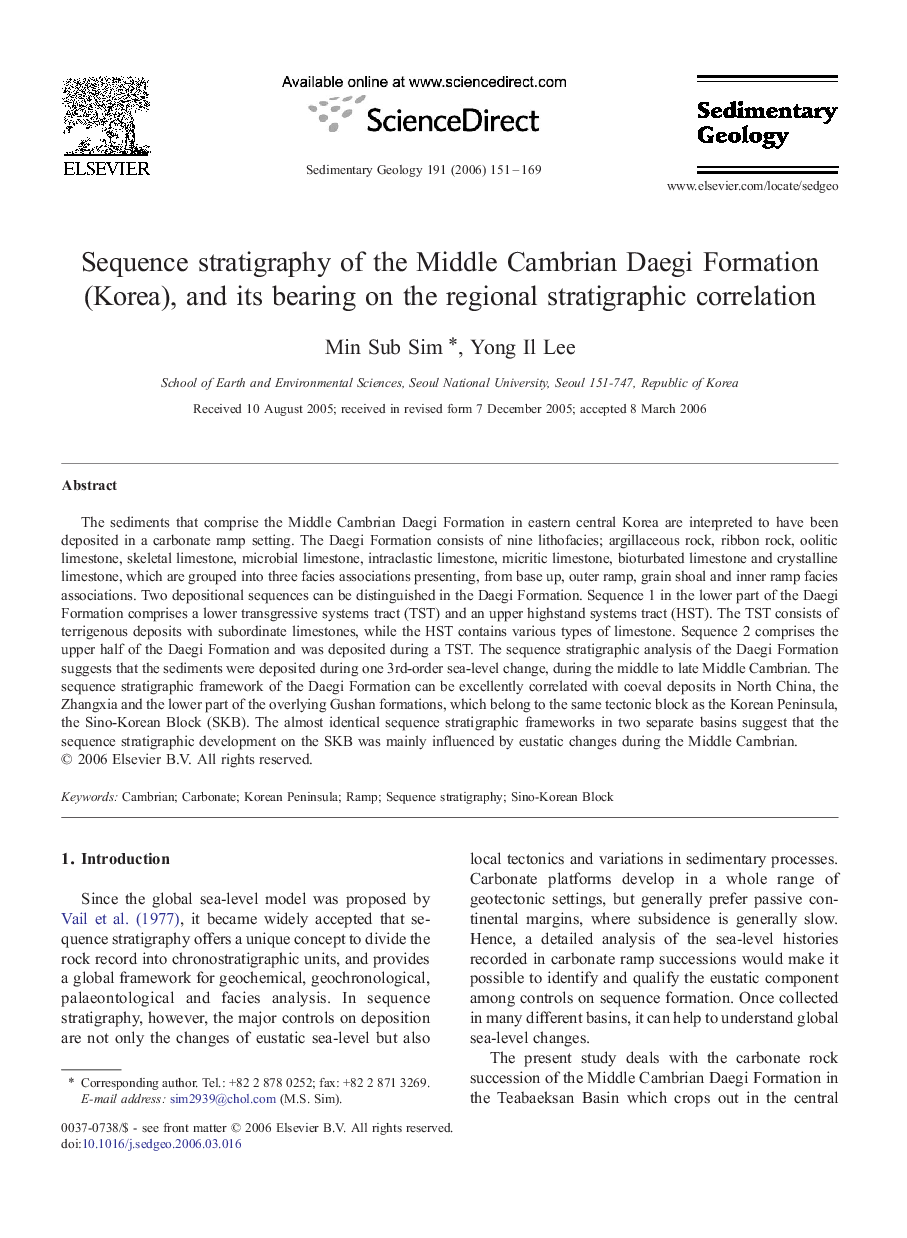| Article ID | Journal | Published Year | Pages | File Type |
|---|---|---|---|---|
| 4691012 | Sedimentary Geology | 2006 | 19 Pages |
The sediments that comprise the Middle Cambrian Daegi Formation in eastern central Korea are interpreted to have been deposited in a carbonate ramp setting. The Daegi Formation consists of nine lithofacies; argillaceous rock, ribbon rock, oolitic limestone, skeletal limestone, microbial limestone, intraclastic limestone, micritic limestone, bioturbated limestone and crystalline limestone, which are grouped into three facies associations presenting, from base up, outer ramp, grain shoal and inner ramp facies associations. Two depositional sequences can be distinguished in the Daegi Formation. Sequence 1 in the lower part of the Daegi Formation comprises a lower transgressive systems tract (TST) and an upper highstand systems tract (HST). The TST consists of terrigenous deposits with subordinate limestones, while the HST contains various types of limestone. Sequence 2 comprises the upper half of the Daegi Formation and was deposited during a TST. The sequence stratigraphic analysis of the Daegi Formation suggests that the sediments were deposited during one 3rd-order sea-level change, during the middle to late Middle Cambrian. The sequence stratigraphic framework of the Daegi Formation can be excellently correlated with coeval deposits in North China, the Zhangxia and the lower part of the overlying Gushan formations, which belong to the same tectonic block as the Korean Peninsula, the Sino-Korean Block (SKB). The almost identical sequence stratigraphic frameworks in two separate basins suggest that the sequence stratigraphic development on the SKB was mainly influenced by eustatic changes during the Middle Cambrian.
